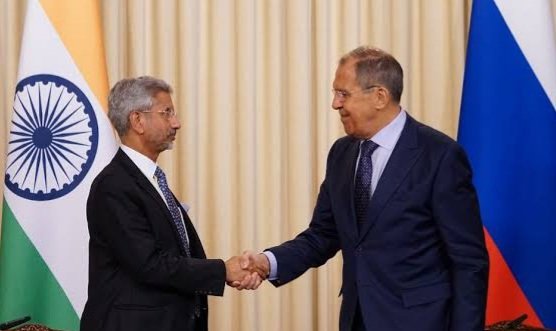Just when India thought that it was successfully balancing its ties with the US and Russia — two arch-rivals — the Russian foreign minister has accused “the West” led by the US of using India as an “object” in its “Anti-China games”.
After Russian Submarines & US’ Drones, Indian Navy Will Now Lease Light Utility Helicopters
India-China Dispute
India and China have been standing eye to eye at the Line of Actual Control (LAC) in Ladakh for almost six months now. Tensions have been escalating after the troops from both sides got into a brutal clash in June that resulted in 20 Indian casualties and an unconfirmed number on the other side.
The disengagement process has been underway with both sides engaging in military-level talks, however, there is not much that has improved since it started.
Speaking at the general meeting of the state-run think tank Russian International Affairs Council on Tuesday, Russian Foreign Minister Sergey Lavrov displayed his contempt for the Quadrilateral or the Quad – an informal strategic forum between the United States, Japan, Australia, and India. Beijing sees this as an anti-China group to deter its strategic missions.
“India is currently an object of the Western countries’ persistent, aggressive and devious policy as they are trying to engage it in anti-China games by promoting Indo-Pacific strategies, the so-called ‘Quad’, while at the same time the West is attempting to undermine our close partnership and privileged relations with India,” Lavrov said.
New Delhi extended an invitation to Canberra to join the Malabar Naval exercise 2020 that was recently concluded. The drills were held in the Indian Ocean in order to understand the level of training of each others’ navies during this exercise.
“This is the goal of the US’ very tough pressure on New Delhi in the military and technical cooperation,” he added. While Lavrov didn’t expand on this, he was possibly pointing at Washington’s threats of imposing sanctions under the Countering America’s Adversaries Through Sanctions Act (CAATSA) for buying S-400 missile system from Russia.
The US House of Representatives has already passed the bill on Tuesday to put sanctions on Turkey for the acquisition of S-400 missile system from Russia. While the bill is yet to go through Senate, it requires “each person that knowingly engaged in the acquisition of the S-400 air defense system” an imposition of sanction with 30 days of passing the legislation.
Lavrov stressed that “the West” is trying to restore the unipolar model of world order but Russia and China are unlikely to “subordinate” under the pressure. He further added that US-led West has been “rejecting the objective trends towards the formation of a multipolar world”. It has “postponed Russia and China for later and is trying to draw all others into a unipolar world by any means possible. For our part, we will promote a unifying agenda.”
He stated that the G20 is the only mechanism outside the UN Security Council where it is still possible to come to terms based on a balance of interests. It is because G20 represents the G7 and the Brazil-Russia-India-China-South Africa (BRICS) nations along with Saudi Arabia, Mexico, Argentina, Indonesia, and Egypt. “The G20 is a venue where there is still hope for promoting more balanced approaches that can then be used in formal international legal structures.”
There was no immediate response from any of the Quad nations including, India on the Russian Foreign Minister’s comments.
Russia’s Attempt At Resolving India-China Tensions
Russia has been trying to nudge India to resolve its border standoff with China. While Moscow denied mediating between India and China over the ongoing border conflict, it laid the groundwork for Shanghai Cooperation Organisation (SCO) meeting in Moscow which was attended by Indian Foreign Minister S Jaishankar along with his Chinese counterpart Wang Yi on September 10.
This was the first bilateral meet between the two ministers since the standoff that started in June.
During the meeting, the two sides held a “frank and constructive” discussion on the developments in the India-China border areas as well as on India-China relations, said the India-China joint press release.
Moscow has maintained close strategic ties with both China and India. Russia is India’s biggest supplier of arms. A new Stimson Center working paper by Sameer Lalwani and others revealed the heavy dependence of Indian defense equipment currently in service.
With a whopping 90% for the Army, 41% for the Navy, and two-thirds of the Indian Air Force’s (IAF) equipment is of Russian origin.

According to data compiled by Stockholm-based thinktank, SIPRI, since 2014 when the Bharatiya Janta Party (BJP) came to power, India’s prime supplier for military equipment has been Russia with US$9.3 billion worth of exports to India. The US is trailing behind with only US$2.3 billion worth of export in the same period.
On the other hand, Russian President Vladamir Putin has pointed towards a possible military alliance between Russia and China. “It is possible to imagine anything.… We have not set that goal for ourselves. But, in principle, we are not going to rule it out, either,” Putin said during a video conference.
Author’s Profile: https://eurasiantimes.com/author/smritiatchaudhary0191/page/2/
Email: smriti.chaudhary02@gmail.com
Follow EurAsian Times on Google News